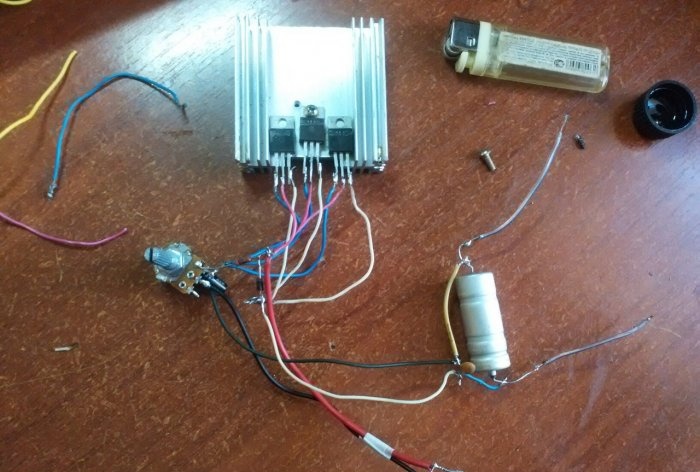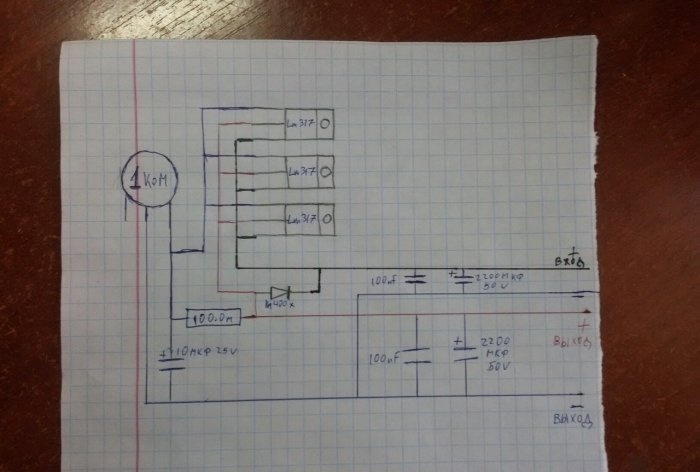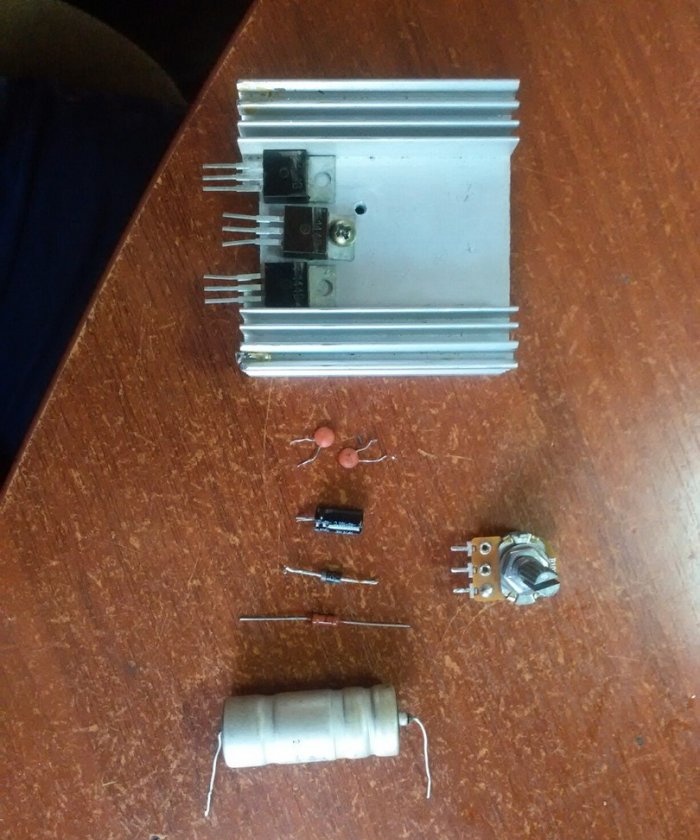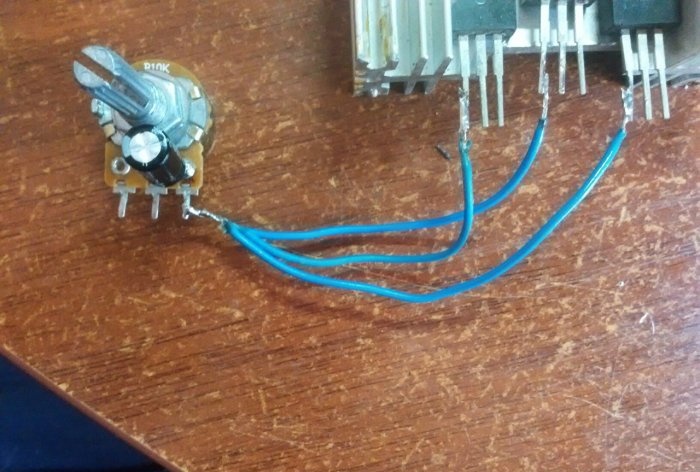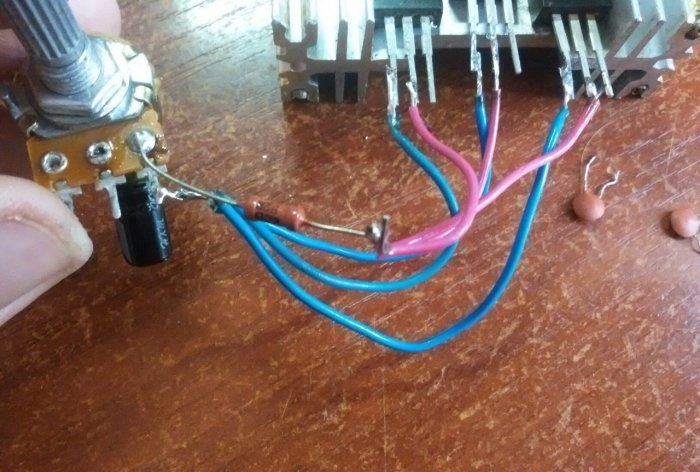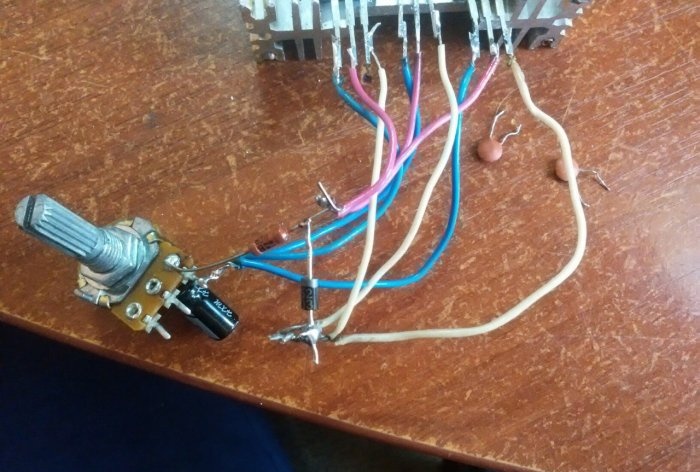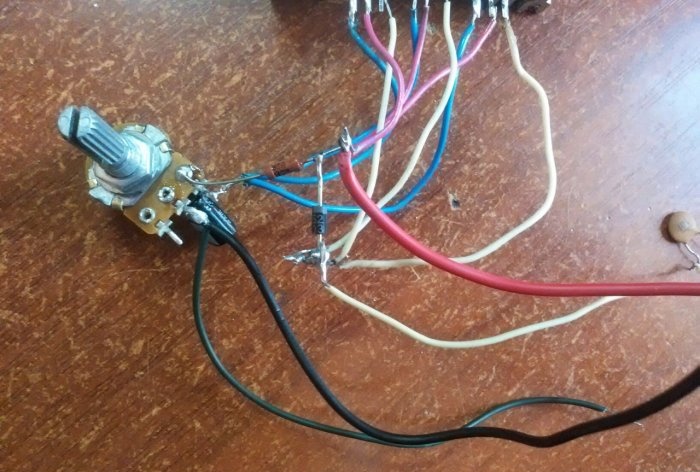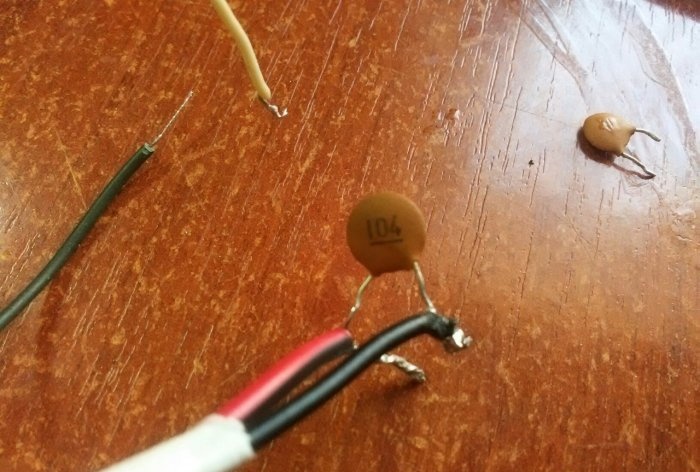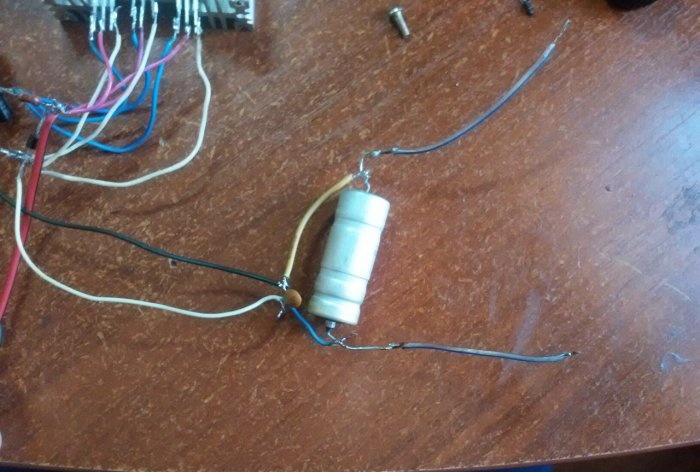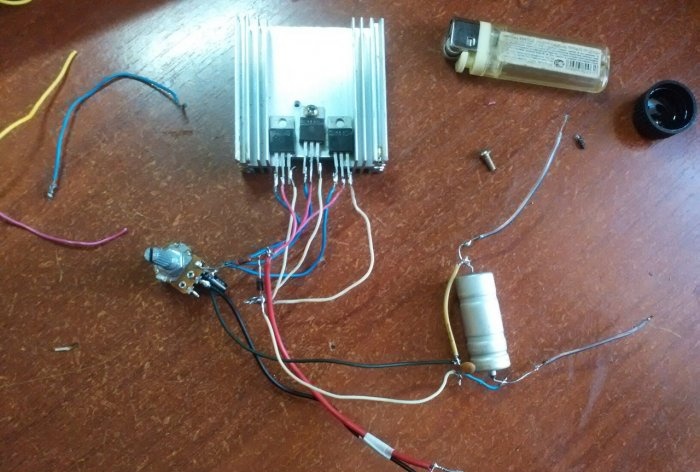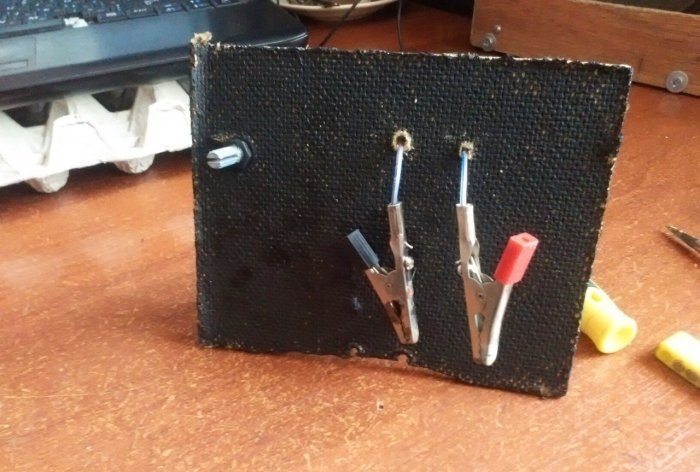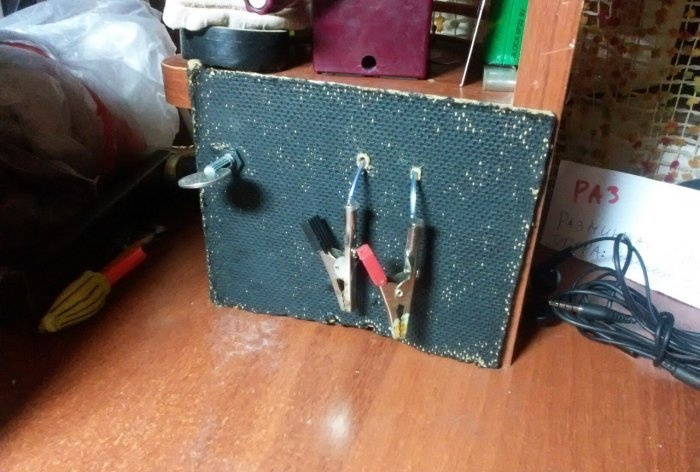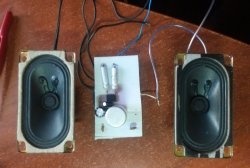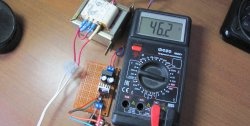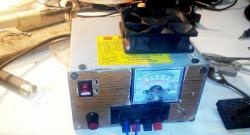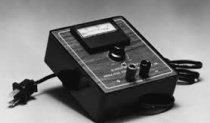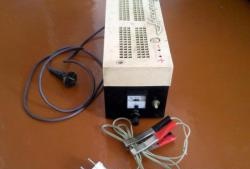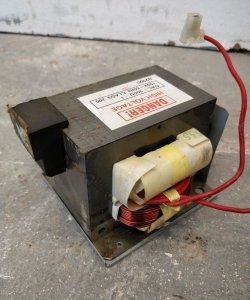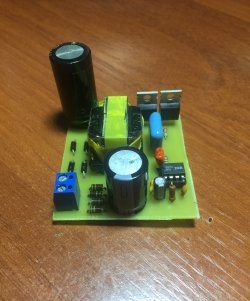Power supply diagram
For assembly we need
- Voltage stabilizer LM317 (3 pcs.)
- Resistor 100 Ohm.
- Potentiometer 1 kOhm.
- Electrolytic capacitor 10 µF.
- Ceramic capacitor 100 nF (2 pcs.).
- Electrolytic capacitor 2200 uF.
- Diode 1N400X (1N4001, 1N4002…).
- Radiator for microcircuits.
Circuit assembly
We will assemble the circuit using wall-mounted installation, since there are few parts. First, we attach the microcircuits to the radiator, this will make it easier to assemble. By the way, it is not necessary to use three LMs. They are all connected in parallel, so you can get by with two or one. Now we solder all the leftmost legs to the potentiometer leg. We solder the plus of the capacitor to this leg, and solder the minus to the other output. To prevent the capacitor from interfering, I resoldered it from the bottom of the potentiometer.
We also solder a 100 Ohm resistor to the potentiometer leg, to which the left legs of the microcircuits were soldered.To the other end of the potentiometer we solder the middle legs of the microcircuits (for me these are purple wires).
We solder a diode to this resistor leg. To the other leg of the diode we solder all the right legs of the microcircuit (for me these are white wires). Plus we solder one wire, this will be the plus of the input.
We solder two wires to the second output of the potentiometer (mine are black). This will be minus entry and exit. We also solder the wire (mine is red) to the resistor where the diode was previously soldered. This will be a plus for the exit.
Now all that remains is to solder to the plus and minus of the input, plus and minus of the output via a 100 nF capacitor (100 nF = 0.1 µF, marking 104).
Next we solder a 2200 µF capacitor to the input, the positive leg is soldered to the input positive.
At this point, the production of the circuit is ready.
Since the circuit produces 4.5 Amps and up to 12 Volts, the input voltage should be at least the same. We will now use a potentiometer to regulate the output voltage. For convenience, I advise you to install at least a voltmeter. I won't make a full body; all I did was attach the heatsink to a piece of fiberboard and screw on the potentiometer. I also brought out the output wires and screwed the crocodiles to them. It's quite convenient. Next, I attached it all to the table.
